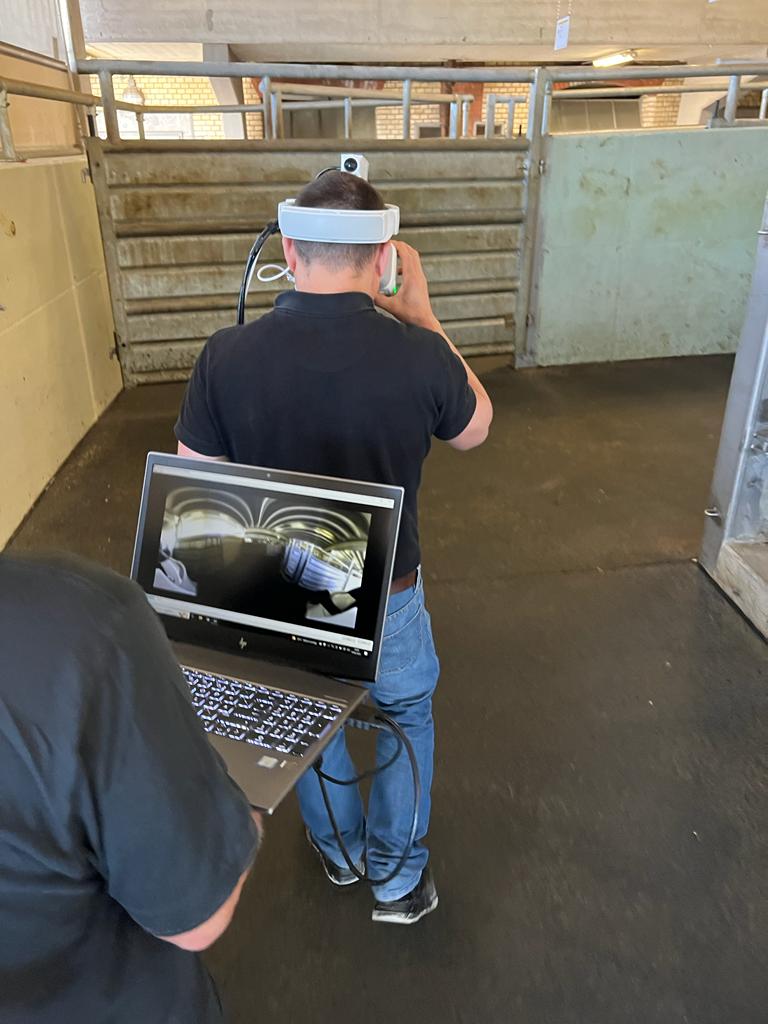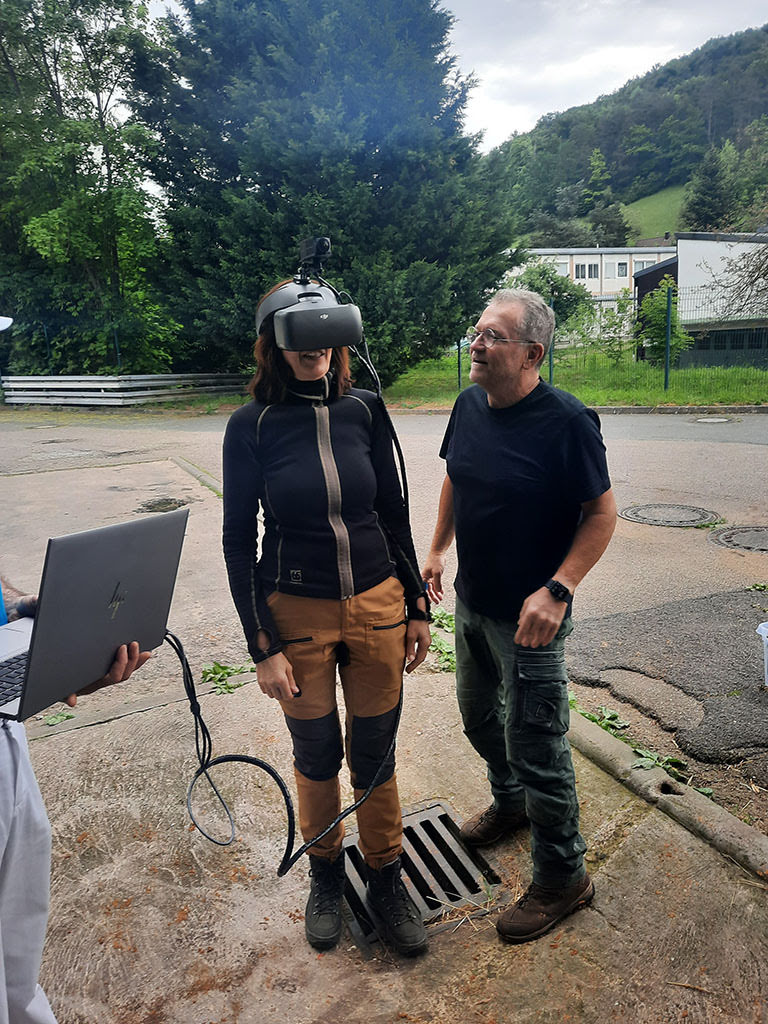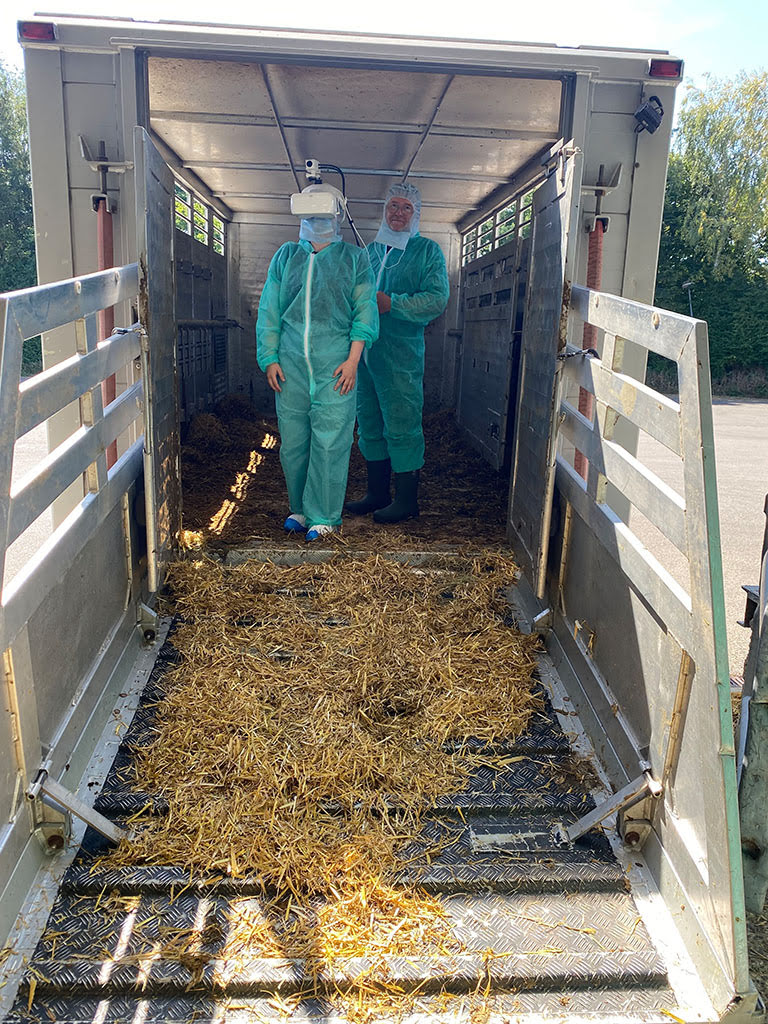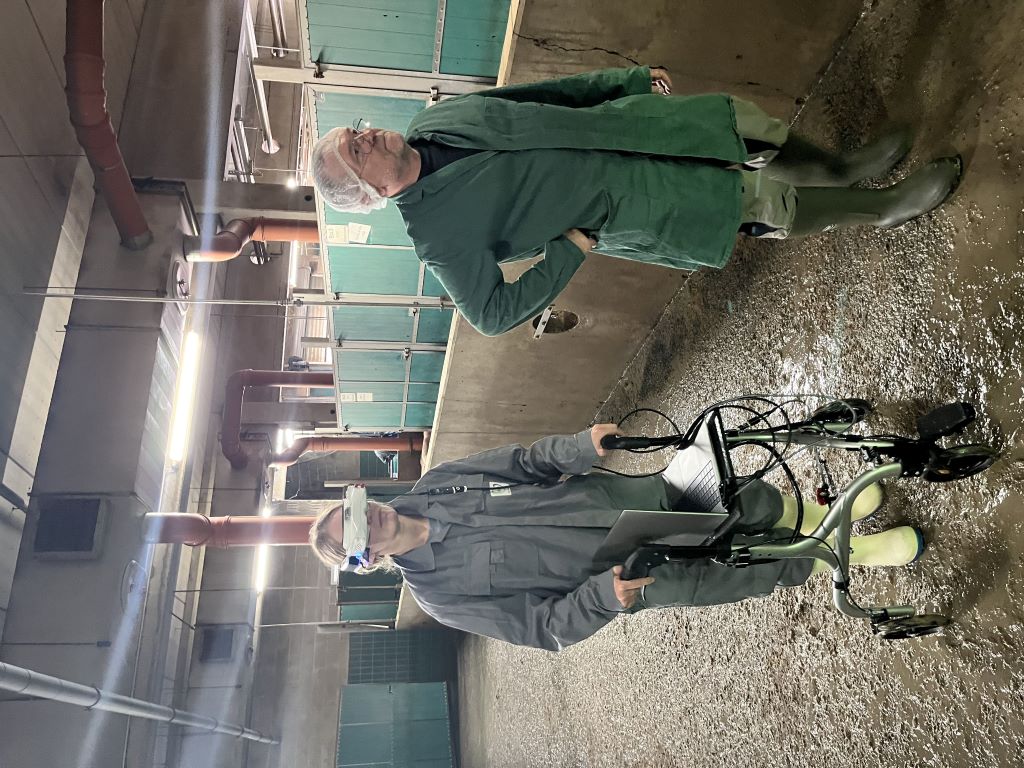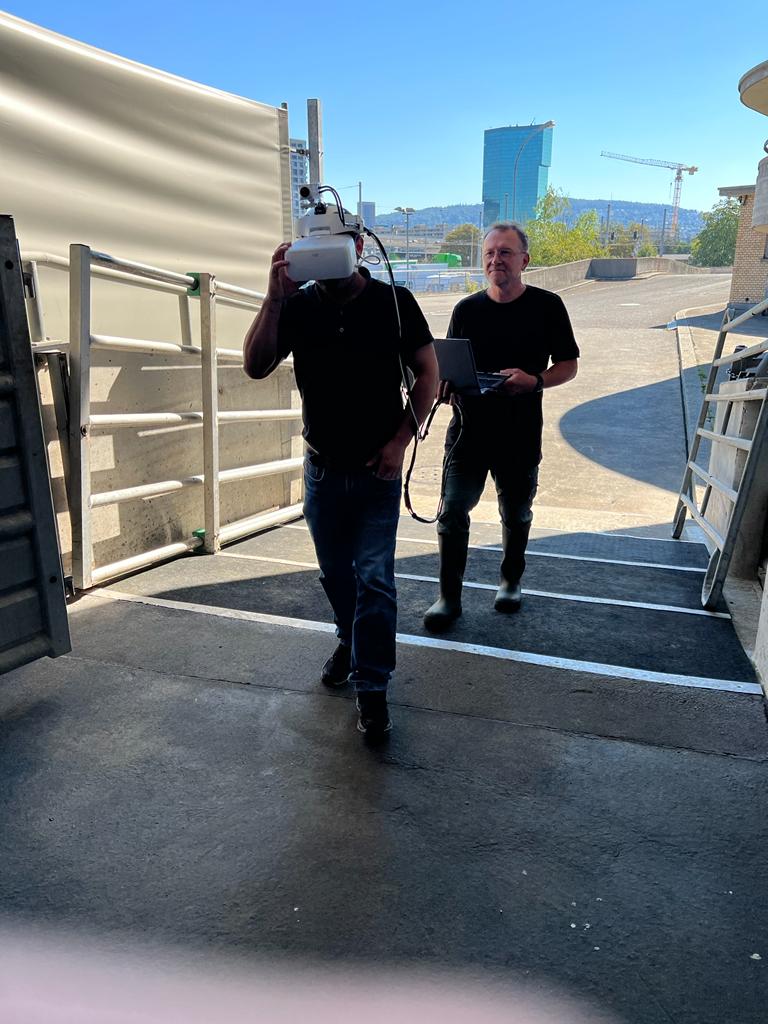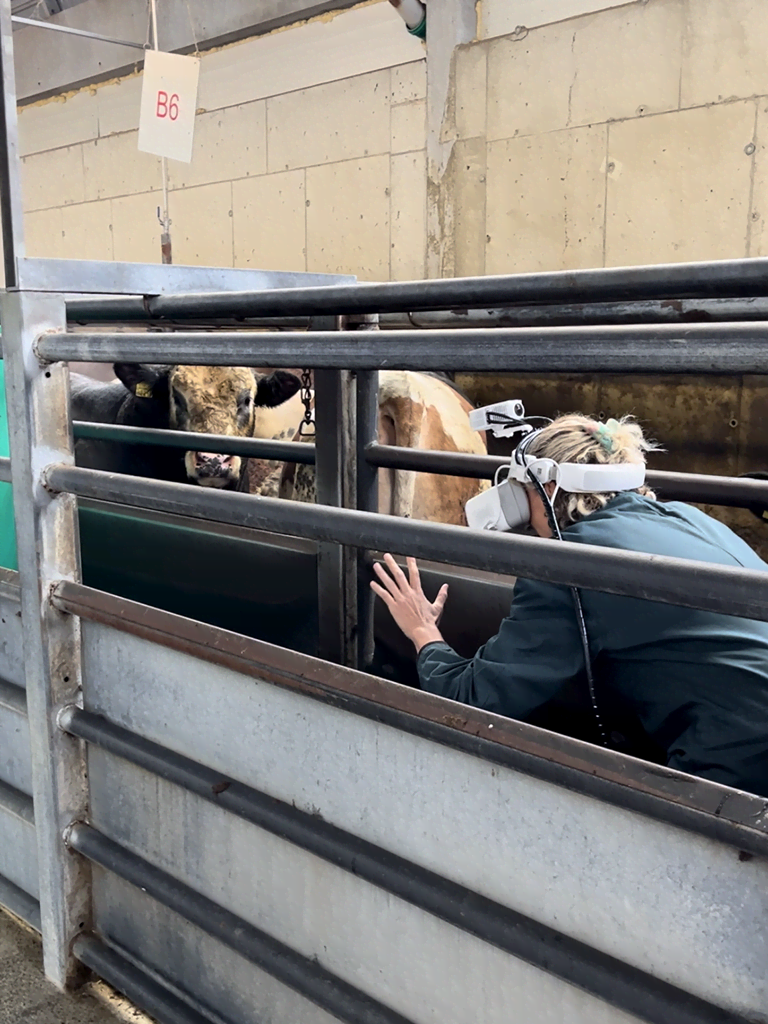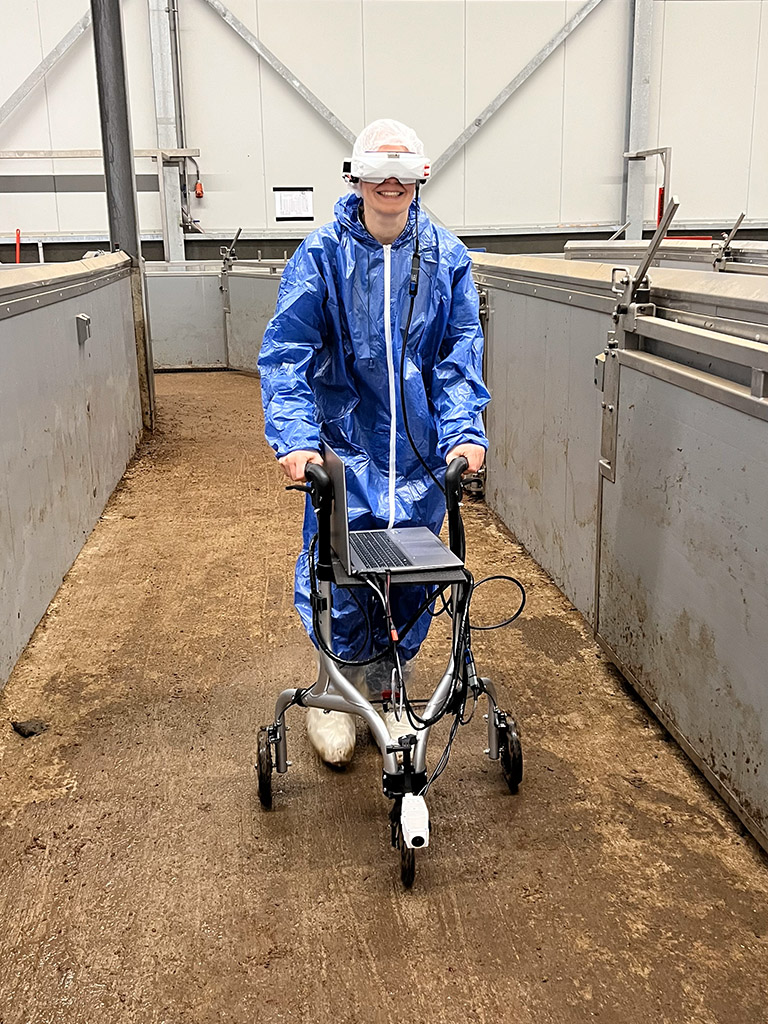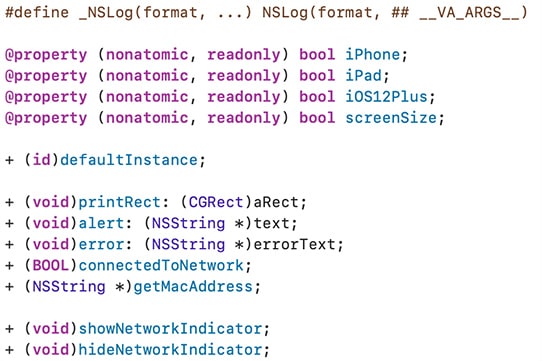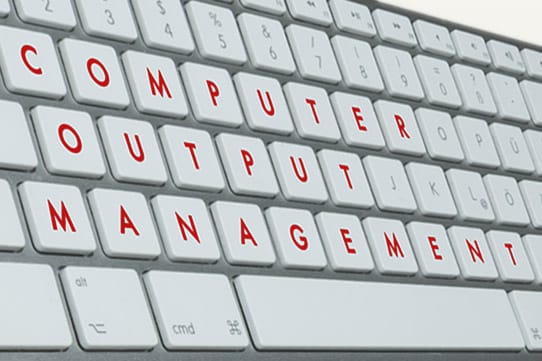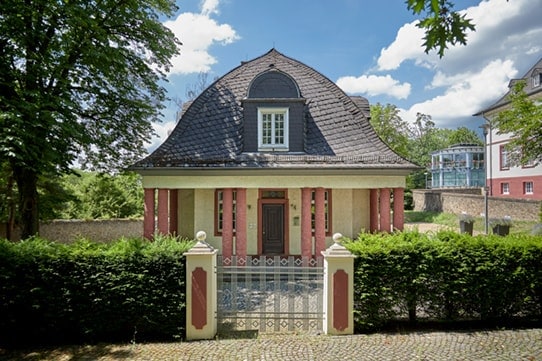The Animal Eye Simulator
Experience the stable through the eyes of a cow, horse or pig
Welcome to the Animal Eye Simulator. With this world first, we visualize how cows, horses and pigs probably perceive their environment. To do this, images taken by two cameras are projected onto video goggles and processed with a variety of filters, so that the wearer of the goggles can understand the animals' visual perception:
- Despite a large field of vision of more than 300º, the animals have tunnel vision because the edges of the visual field are blurred and fuzzy.
- Compared to a human, they only have about 30 percent vision in the lateral field of vision.
- The animals have a different color perception than humans; they cannot see red (dichromacy).
- Contrasts are perceived more extremely.
- Cows and horses adapt to changing light conditions more slowly than humans.
- Cows and pigs are much worse at judging distances than humans.
Anyone who has ever experienced for themselves how a cow, horse or pig perceives its environment can understand the animals better and deal with them better. Using the simulator can change people's perception of the animals, and stable systems can be optimally geared towards animal welfare. If the farmer no longer uses force to drive a stubborn cow in the milking parlor, but instead looks for the problem with his eyes and ears, both cow and dairy farmer benefit from the technology of the animal eye simulator. Riders who have already entered a horse trailer with our system can better understand the needs of the horses when loading.
The purchase of such a system does not make sense for every user. Therefore, you have the option of booking a visit from us with the simulator at your company.
We are very successful with our seminars on farms, horse ranches and slaughterhouses in order to convey the perception of animals to people, thereby strengthening animal welfare and making it easier to handle the animals. The reactions to our visits and lectures are consistently positive, please feel free to contact us. You will find our contact details below.
We will soon be offering simulators for hire so that you can use them at your events.
The Simulator
The simulator is operated with a specially developed 360º camera. Otherwise, the system consists of commercially available components: Virtual reality goggles and an upper mid-range laptop. The software we developed controls the components and displays the image captured by the special camera on the VR goggles and the laptop screen. Various settings can be changed during runtime, for example the animal's color vision, which is different from that of humans, can be switched on and off. We supply the camera and software required for operation, the rest of the hardware must be purchased by the customer.
VR goggles
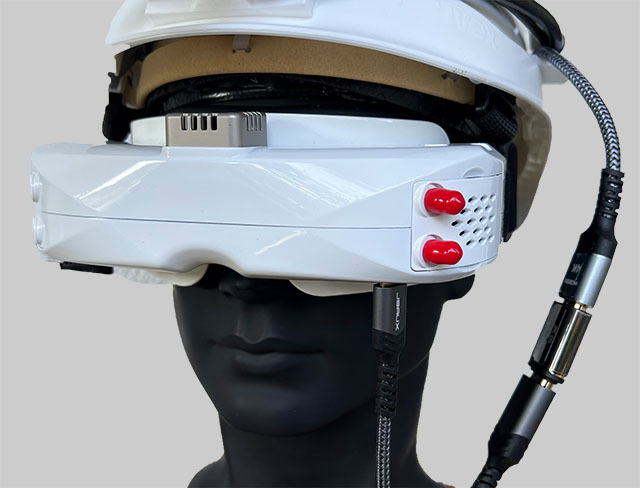
In principle, any pair of goggles can be used that can be configured as a second monitor of the computer system without additional drivers, e.g. via an HDMI connection. These glasses are also known as goggles and are often used in conjunction with drones. The software was developed with VR goggles from DJI, but these are no longer in production. We now recommend the use of the Skyzone SKY04X, the camera is mounted on a construction site helmet for which we manufacture special attachments. To a certain extent, the Skyzone allows use by several users with different visual acuity and eye distances without having to replace the lenses. It also has a ventilator that ensures a clear view at all times. These features are very important if groups are to work with the simulator.
Hardware requirements
The system was developed on HP notebooks from the ZBook series with an i7 processor and NVidia graphics card. The systems have an SSD and are well suited for use in the stable or on the pasture. If you want to use a different computer, it should meet the following requirements:
- At least six processor cores, preferably eight.
- Clock frequency at least 2.5 GHz.
- At least 8GB RAM, preferably 16GB RAM.
- NVIDIA graphics card with CUDA support.
- Two USB 3.0 interfaces for the cameras. At least 650 mA must be available per interface to power the cameras.
- HDMI video output for connecting video glasses.
- The HDMI video output must be configurable as a second video output, not as a mirroring of the screen. You see different outputs on the two screens, an extension of the desktop, so to speak. Just as if you were working with a "normal" computer with two screens.
- The laptop battery should have a capacity of 70Wh or more.
- Screen resolution of the primary screen (this is the internal, i.e. the panel of the notebook) at least 1280x1024 pixels, HDMI output up to 1920x1080 pixels.
- An SSD hard disk is strongly recommended. If only the simulator is to be operated, 256 GB capacity is sufficient.
- Operating system at least Windows 10 Professional, Windows 11 is recommended.
Although the system will theoretically run on any computer that meets these requirements, it has only been tested and developed on the HP systems mentioned above. Unfortunately, we cannot guarantee that the system will work as intended on every computer.
If possible, the computer should be operated as a standalone system and not integrated into the company's IT. This makes both operation and maintenance much easier.
Camera and accessories
The camera consists of two individual cameras for industrial use. We produce the housing in small series using 3D printing.
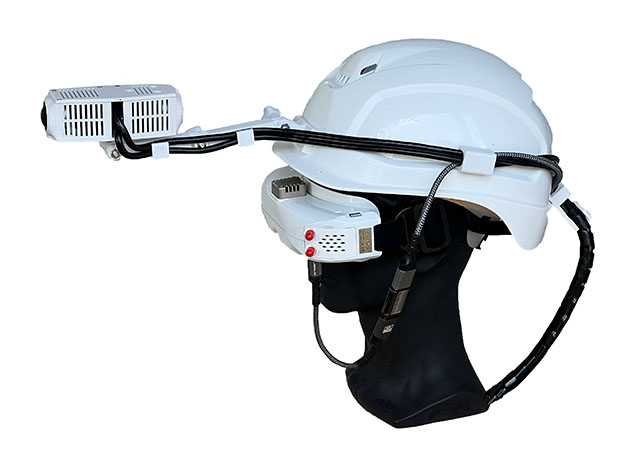
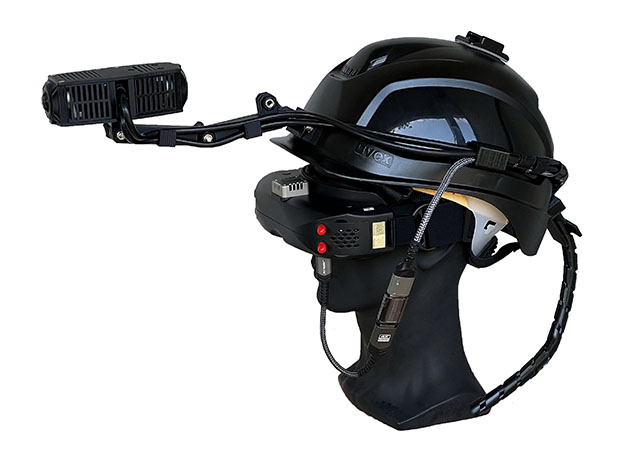
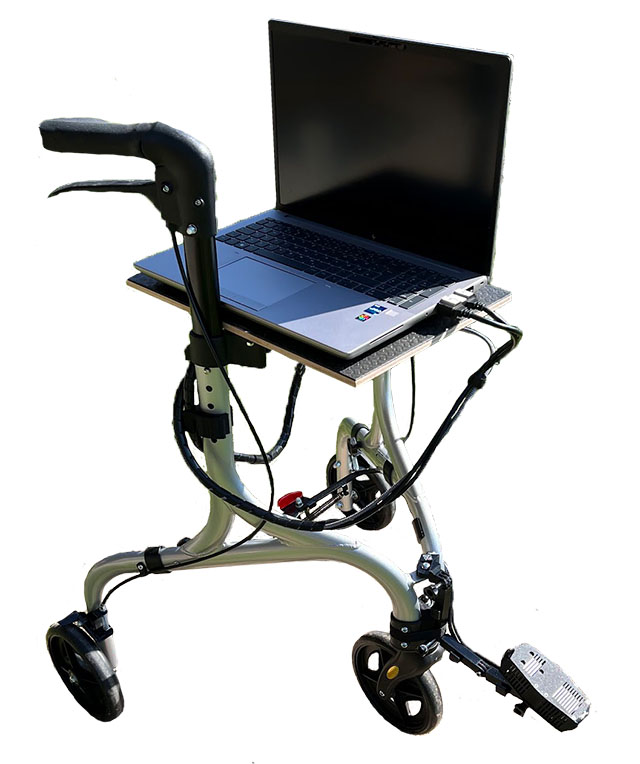
The camera is connected to the laptop via two USB 3 cables. The cables are supplied in sufficient length. The camera is mounted on the construction helmet using 3D printed parts. For pig vision, the camera is attached to a rollator using specially manufactured brackets.
Outlook
At the beginning of 2023, the horse simulation was presented at the Dillenburg State Stud. In July 2024, we released the pig simulation and used it successfully at Vion Food. At the turn of 2024/2025, the simulator was expanded to include audio software that can be used to measure ultrasonic sound and make it audible to humans. Customers who have purchased an update subscription receive such feature updates for free as soon as they are released.
Seminars and on-site visits
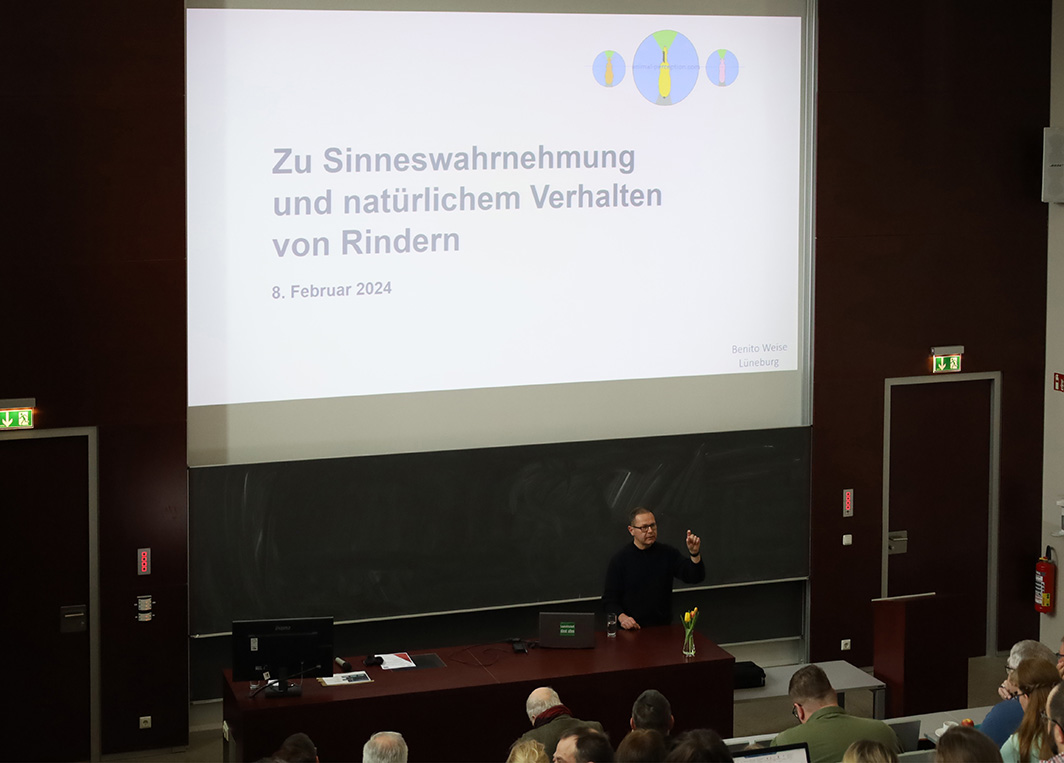
If you are interested in a visit to your company, a presentation or seminar, we will be happy to assist you. Both Benito Weise and Peter Menzel offer seminars. In addition to working with the simulator, Benito Weise offers a comprehensive theoretical part on sensory perception and behavior in cattle, horses and pigs, while Peter Menzel covers the practical side of livestock husbandry and, together with Dr. Petra Hubrich offers seminars for horse owners and enthusiasts.
If you decide to purchase a simulator system after our visit, the price of our visit will be deducted from the purchase price.
For further information, appointment inquiries and price information, please do not hesitate to contact us:
Renting the simulator
If you only want to use the simulator occasionally, e.g. for events or trade fairs, we offer you the option of renting the system. We deliver the system to you including detailed instructions, a laptop, and VR glasses, and you can get started right away. Unfortunately, we can only offer this service in countries that belong to the EU. Use in pigsties is not permitted.
Source, info and support
Camera and software can be purchased from us. Optionally, an update subscription can be taken out. Please contact Mr. Menzel or Mr. Kellermann. We are available at the following address before and after the purchase for questions or price information:
The system can be tested on-site by arrangement.
Press, radio and television
- SWR Aktuell: Virtual Reality im Eifeler Stall: Wie Kühe die Welt sehen
- Roxana Eberlein, die sächsische Tierwohlmultiplikatorin des Netzwerks Fokus Tierwohl ist mit dem Tieraugen-Simulator bei der Hochschule Anhalt.
- Landesbauernverband in Baden-Württemberg e.V. - Ludwigsburger Pferdetag 2024: Facebook Post
- Hofgut Eichigt / dennree: Instagram Reel zu unserem Besuch auf dem Hofgut
- Topagrar: Erster Einsatz der virtuellen „Schweinebrille“ bei Vion
- Islandpferdezentrum Wiesenhof: Facebook Post und Webseite des IPFK
- Stabsstelle der Landesbeauftragen für Tierschutz Baden-Württemberg: Instagram Video von Frau Dr. Mariana Peer
- Alcovit: Wie tickt die Kuh?
- TAG24.de: Tüftler entwickeln eine Pferdebrille
- Landeszeitung für die Lüneburger Heide: Titelseite und Lokalteil
- Norddeutscher Rundfunk: Virtual Reality: Das Leben aus Sicht einer Kuh (mit Video)
- Bayerischer Rundfunk: Unser Land: Mit Virtual Reality Brille die Bedürfnisse der Kuh erkennen
- agrarheute: Kühe verstehen: So geht's mit der Kuhbrille
- topagrar online: Video: Das Leben aus Sicht einer Kuh
- Schweizer Bauer: «Kuhbrille» zeigt Welt aus Kuhsicht
- IHK Hannover: In der Realität angekommen
- Agroexpert (Ukraine): Випробувано Agroexpertом – Побачити світ очима корови (mit Video)
- Cavallo Ausgabe 02/2020: Die Welt einmal mit Pferdeaugen sehen
- Bauernstimme 12/2020: Im Sinne der Kuh
- Digitalisierungspreis: Drei Projekte erhalten Digitalisierungspreis Agrar und Ernährung Niedersachsen
Installation and update
Click here to go to the Animal Eye Simulator download and update page.
We are working on the future. For you.

